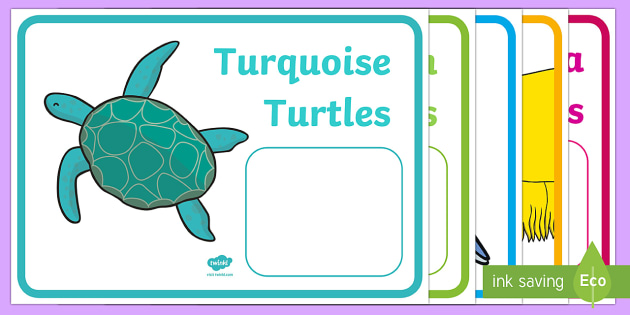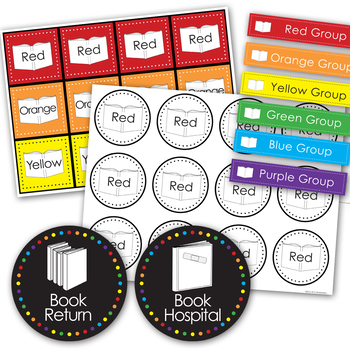Reading Group Labels
Are you a teacher looking for a way to organize your reading groups and make them more effective? Look no further than reading group labels. These simple but essential tools can help you keep track of your students, ensure they are reading at the appropriate level, and ultimately improve their reading skills.
Pain Points
As a teacher, you know that reading groups are an essential part of the learning process. However, they can also be time-consuming and confusing to manage. Keeping track of which students are in which groups, what books they are reading, and what skills they need to work on can be a daunting task. Additionally, students may be reluctant to participate in reading groups if they feel like they are being "labeled" or singled out as struggling readers.
Target of Reading Group Labels
The target of reading group labels is to improve the organization and effectiveness of reading groups by providing a simple and visual way to keep track of students and their reading levels. By creating specific labels for each group, students can feel like they are part of a team and are more likely to engage in the process. Additionally, reading group labels can help teachers quickly identify which students need additional support and which ones can work independently.
Main Points
Reading group labels are a simple but essential tool for organizing and improving reading groups. They can help teachers keep track of students and their reading levels, provide a visual way for students to feel like they are part of a team, and quickly identify students who need additional support. To use reading group labels effectively, it is important to create specific labels for each group and make sure they are clearly displayed in the classroom.
Using Reading Group Labels
To use reading group labels effectively, you will need to create specific labels for each group. These can be based on reading level, skill level, or interests. For example, you might have labels for "Fiction Readers," "Non-Fiction Readers," "Beginning Readers," and "Advanced Readers." Once you have created your labels, make sure they are clearly displayed in the classroom. You can use chart paper, bulletin boards, or even book bins to display the labels.

Benefits of Reading Group Labels
Using reading group labels has several benefits. First, it helps to organize your reading groups and ensure that each student is reading at the appropriate level. This can help to improve their reading skills over time. Additionally, reading group labels provide a visual way for students to feel like they are part of a team, which can increase engagement and motivation. Finally, reading group labels can help you quickly identify which students need additional support and which ones can work independently.

How to Choose Reading Group Labels
When choosing reading group labels, it is important to consider your students' interests and reading levels. You may want to create labels based on popular book themes, such as animals or superheroes, or based on reading levels, such as "Emerging Readers" or "Fluent Readers." It is also important to make sure your labels are easily visible and clearly displayed in the classroom.

How to Introduce Reading Group Labels
To introduce reading group labels to your students, you may want to begin by explaining the concept of reading groups and how they can help everyone become better readers. Then, share the specific group names and explain how each one is unique. You may also want to decorate the labels with student input or related images to make them more appealing and interesting.

Question and Answer
Q: How do I know which reading level to assign to each group?
A: You can determine each student's reading level by administering a reading assessment or working with your school's reading specialist. Once you have this information, you can create groups based on similar reading levels.
Q: How often should I change reading group assignments?
A: It depends on your students' progress and needs. You may want to change groups every few weeks or every quarter, depending on how quickly your students are progressing.
Q: What if a student wants to switch groups?
A: If a student wants to switch groups, talk to them about why they feel this way. If it is because they want to read different books or explore a different theme, you may be able to accommodate their request. If it is because they are struggling in their current group, you may want to work with them to develop strategies to improve their reading skills.
Q: How can I make sure all students are engaged in their reading group?
A: One way to keep all students engaged is to provide a variety of reading materials and activities that appeal to different learning styles. You may also want to set goals for each group and track their progress over time.
Conclusion
Reading group labels are an essential tool for organizing and improving reading groups. By creating specific labels for each group and displaying them in the classroom, teachers can help students feel like they are part of a team, track their progress, and quickly identify those who need additional support. Whether you're a seasoned teacher or just starting out, reading group labels can help you take your reading instruction to the next level.
Gallery
Guided Reading Group Labels And Chart | Guided Reading, Book Bins

Photo Credit by: bing.com /
Editable Coloured Animal Reading Group Display Labels

Photo Credit by: bing.com / reading group animal editable labels display names coloured class resource family twinkl tree signs groups whakapapa template literacy colour nz
Guided Reading Group Labels - Botanical Theme | Primary Classroom

Photo Credit by: bing.com /
Guided Reading Group Labels And Chart By WOWorksheets | TpT

Photo Credit by: bing.com / labels
Tropical | Classroom Decor Reading Group Labels In 2021 | Reading

Photo Credit by: bing.com /